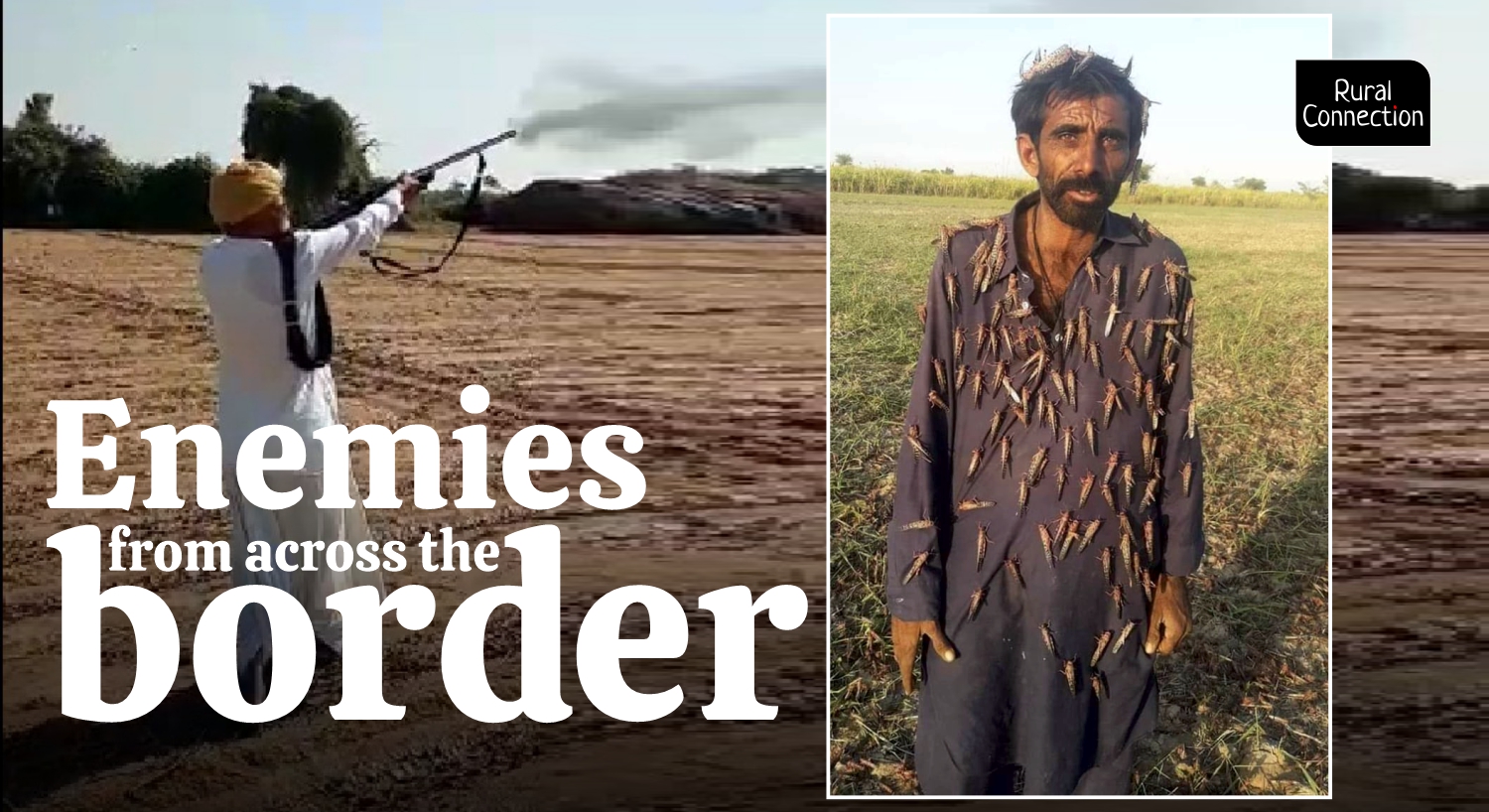Banaskantha (Gujarat)
Locusts have wreaked havoc in five districts of Gujarat. The farmers are working day and night to keep them away. The farmers are also working their hardest to come up with newer ways to tackle the situation. So, in several fields, one hears banging of utensils while from some others even gunfire can be heard. The farmers have also been demanding aerial sprays from the government in the affected regions.
Kutch, Sabadkantha, Patan, Mahesana and Banaskantha are the worst hit due to locusts. Several thousand hectares of seasonal crops including wheat, jeera, divela, cotton, rai and corn of these districts have been ruined. Areas along the Pakistan border in Banaskantha have fared the worst.
Farmer Ram Singh Rajput who is the sarpanch of Suiga Village in Banaskantha told Rural Connection over the phone, “Swarm of locust was first seen on 14 December, since then, their number has been on a rapid rise. They had come from Rajasthan’s side and have so far destroyed crops over thousands of hectares. In several villages, there hasn’t even been a single field spared. The government measures have been so far, ineffective.”
Agricultural officer of Banaskantha, PK Patel, said: “Nineteen teams from Central Government and 27 teams from the district have been spraying after identifying the locations. Not the entire district of Banaskantha but only Tharat suffers majorly. Wherever we are getting the location, we are spraying the locusts with melathian.”
Farmers, meanwhile, are working hard to save their crops from locusts. As per Ram Singh Rajput, there had been a locusts attack three months ago but it was not at such a large scale and so was soon controlled.
No aerial spray
Gujarat chief minister Vijay Rupani had admitted in a talk with media that this has been a natural disaster of Gujarat. He told that especially the region of Banaskantha along the Pakistan border has been worst hit and informed that efforts are underway to control the pests with the help of the central government’s locust control team.
He also said, “We cannot provide aerial sprays as the medicine is toxic and may harm humans, animals and water bodies upon contact. So we are provide ground sprays and hope that we’d be able to control them soon enough.”
Rajasthan has already suffered massively
Several times in 2019, India has faced the attack of locust. They hit for the first time on 21 May in Jaisalmer’s Falaudi, thereafter, spreading over to Barmer, Jodhpur, Jaisalmer, Jalore and many more districts resulting in great losses. Following this, the Central Agricultural Ministry had dispatched a special team to Rajasthan. 1070km international border with Pakistan in Rajasthan was kept on high alert during that time. In July the matter was also raised in Rajasthan’s Vidhan Sabha when the government had informed that the swarm had travelled across Yemen, Iran and Pakistan to enter India.
Biggest attack since 1993
Prior to this, 1993 had witnessed the locust attack of such proportions. At that time locusts from Pakistan had destroyed several thousand hectares of crops in the month of September-October. A unique type of grasshopper, this pest can fly up to 150kms. The farmers are also worried because a swarm of locust can consume the food of 35,000 people in a day and harm all vegetation in their way—even trees or any plant.


















